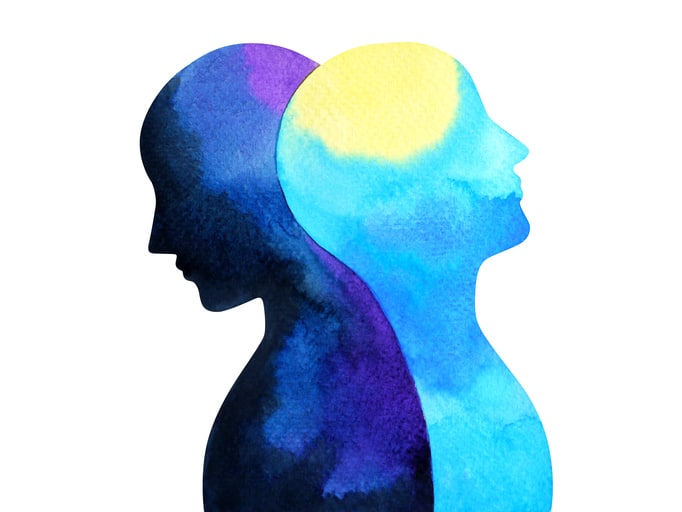
Mental health interventions delivered online or via a smartphone showed promise for treating kids with obsessive-compulsive disorder (OCD) and adults with depressive symptoms as well as comorbid hypertension or diabetes, researchers reported.
In a non-inferiority trial of participants with a mean age 13.4 years, the six-month Children’s Yale-Brown Obsessive-Compulsive Scale (CY-BOCS) score was 11.57 points in the so-called “stepped-care” group versus 10.57 points in the face-to-face treatment group (control) for an estimated mean difference of 0.91 points (1-sided 97.5% CI −∞ to 3.28, P=0.02 for non-inferiority), according to Kristina Aspvall, PhD, of the Child and Adolescent Psychiatry Research Centre in Stockholm, and co-authors.
“Participants in the stepped-care group first underwent an internet-delivered CBT [cognitive behavioral therapy] program for 16 weeks… parents had access to a parallel online intervention that focused specifically on reducing family accommodation and the use of positive reinforcement. Each family was assigned a personal therapist throughout the whole treatment. Communication was in the form of asynchronous, written messages through the encrypted online platform. Additional telephone support was provided on demand,” they explained in JAMA.
In two other studies done in Peru and Brazil, those who received the smartphone-based intervention experienced at least a 50% reduction in depressive symptoms at three months versus “enhanced usual care” (40.7% vs 28.6% in Brazil, odds ratio 1.6; 52.7% vs 34.1% in Peru, OR 2.1). However, differences across groups were no longer statistically significant at six months, according to Ricardo Araya, MD, PhD, of King’s College London, Jaime Miranda, MD, PhD, of the Universidad Peruana Cayetano Heredia in Lima, and co-authors.
The digital intervention app “consisted of 18 brief automated mini-sessions, delivered over a six-week period at a rate of three mini sessions per week, each requiring less than 10 minutes to complete,” they explained in JAMA. Study participants were given a smartphone with the pre-installed app and received completed a tutorial on its use, they added.
The studies “offer relevant and timely evidence for… digitally enabled care… Both articles present an impressive assessment of digital approaches to improve access and outcomes and use high-quality methodology… that is often lacking in studies evaluating these type of digital interventions,” noted John Torous, MD, of Beth Israel Deaconess Medical Center in Boston, in an accompanying editorial.
The findings take the field of behavioral health “beyond the simple question of accessibility and feasibility and address important questions about effectiveness and implementation,” he added.
While the Swedish study suggests that digital mental health “could help fill critical gapss in specialty care, the findings out of South American show promise for “filling the need for broader care services,” Torous explained.
Yes, the studies are different in many ways, but “they share commonalities around the universal application of digital mental health, including the importance of human support, the need to monitor and assess digital interventions, and the need for assessment in the clinical population,” he pointed out.
Human support in particular is critical, Torous said, noting that the Swedish study had on-call therapists, while the Peruvian cohort had nursing support, which lead to 92% treatment adherence, and the Brazilian cohort did not for 65% adherence. That begs the question “to what degree is human support necessary? The answer will influence the related questions of cost-effectiveness and of tangibly increased access to care,” he wrote.
Aspvall’s group conducted the trial from October 2017 to May 2019 at two child and adolescent mental health clinics, and 99% of the 152 participants (62% females) with OCD completed it. Follow-up ended in April 2020. CY-BOCS at six months was the primary outcome and the predefined non-inferiority margin was 4 points on the CY-BOCS.
If enrollees in the stepped-care group were deemed non-responders at the three-month follow-up, they were offered a course of traditional face-to-face treatment, the authors explained. Participant randomized to the control group got in-person CBT for 16 weeks, and non-responders at three months also received more face-to-face treatment. The authors reported that 46% in the stepped care group and 30% in the control group were non-responders. Of those who accepted, there was a mean of 7.76 additional face-to-face sessions for the stepped-care group and 7.56 sessions for the control group.
In a post hoc analysis, 49% in the stepped-care group were in remission versus 60% in the control group (OR 0.64, 95% CI 0.34-1.22, P=0.17) at 6 months, Aspvall and co-authors reported.
For the full study, the mean therapist time was 526.18 minutes per family in the stepped-care group and 849.10 minutes in the control group.
As for adverse events (AEs), 64% in stepped-care group and 67% in the control group experienced AEs, although most were mild and subsided between the assessments, according to the authors. There was one serious AE in each group unrelated to treatment. The serious AEs—anorexia, increased anxiety, and suicidal thoughts—required admission to inpatient care.
The authors noted that they had an edge over previous online CBT trials that relied heavily on self-referred patients, while their study population came from self-referral and clinical referrals, “and the source of referral… did not moderate the results.”
Study limitations included the possibility that the results may not translate to countries that have more specialty OCD clinics than Sweden, and the fact that patients with co-occurring conditions, such as autism spectrum disorder, were excluded.
For the South American trials, participants with clinically significant depressive symptoms who were being treated for hypertension and/or diabetes were enrolled in a cluster randomized clinical trial (RCT) at 20 sites in São Paulo, Brazil (n=880) from September 2016 to September 2017, with final follow-up in April 2018. The RCT in trial was an individual-level one at seven sites in Lima, Peru (n=432) and done from January 2017 to September 2017, with final follow-up in March 2018).
The intervention consisted of low-intensity sessions, aimed at reducing depressive symptoms, delivered over 6 weeks. It was “based on behavioral activation principles, and supported by nurse assistants,” the authors explained. There were 440 participants in 10 clusters in São Paulo and 217 participants in Lima.
They also noted that the “digital intervention did not aim to improve the management of hypertension or diabetes, many suggested activities aimed to improve comorbid physical conditions (e.g., healthy eating or physical activity).”
For enhanced usual care (n=440 participants in 10 clusters in São Paulo; n=215 participants in Lima), treatment of depression and the other disorders was up to the discretion of the local clinicians. These patients did not receive a smartphone.
In both countries and in all arms, >80% of the participants were women over the age of 41. Around a third had high blood pressure and diabetes. Most rated the severity of depression based on the Patient Health Questionnaire-9 (PHQ-9) as moderate.
For AEs, worsening of depressive symptoms occurred in 10% of patients and worsening of suicide ideation occurred in 6% of patients in the intervention group and 12% and 7%, respectively in the control group.
Finally, at six months, the authors reported the following for improvements in PHQ-9 scores:
- São Paulo: 46.1% in the digital intervention group versus 40.4% in the control group, for a between-group absolute difference of 5.7% (95% CI −2.2% to 13.9%, OR 1.2, 95% CI 0.9 to 1.7).
- Lima: 55.2% versus 51.3%, respectively for a between-group absolute difference of 3.9% (95% CI −5.3% to 13.9%, OR1.2, 95% CI 0.8 to 1.7).
“None of these comparisons were statistically significant,” they reiterated, adding that “[o]ne possible reason for the fading of these clinical benefits is that the app was only available during the first six weeks of the trial.”
Araya, Miranda, and co-authors said they considered the adherence rates to at least half the sessions of the smartphone-based intervention to be noteworthy, although they acknowledged that they could not distinguish the relative contribution of the app and the nurses to improved adherence.
Still, “effective remote digital interventions are sorely needed with the current Covid-19 epidemic,” they stressed, and their findings “provide further evidence to support the use of digital interventions within the health care sector,” especially in low- and middle-income countries.”
-
An internet-based intervention followed by in-person counseling was non-inferior to in-person therapy alone in children and adolescents with obsessive-compulsive disorder.
-
A smartphone-based mental health intervention for adult patients with depressive symptoms, and comorbid hypertension or diabetes, lead to improvements in depression at three months, although the benefits did not hold at six months.
Shalmali Pal, Contributing Writer, BreakingMED™
The study by Aspvall and co-authors was funded by the Swedish Research Council for Health, Working Life and Welfare, ALF Medicin Project Grant by Region Stockholm, and the Jane and Dan Olssons Foundation. Aspvall reported support from Drottning Silvias Jubileumsfond, Fonden för psykisk hälsa, and Fredrik och Ingrid Thurings stiftelse. Co-authors reported relationships with, and/or support from, Region Stockholm, UpToDate, Wolters Kluwer Health, Elsevier, the Swedish Research Council for Health, Working Life and Welfare, and Stockholm County Council.
The studies by Araya and co-authors was funded by the NIH/National Institute of Mental Health (NIMH). Araya reported a patent pending for CONEMO. Miranda reported support from NIMH. Co-authors reported relationships with, and/or support from, Otsuka Pharmaceuticals, Apple, Pear Therapeutics, One Mind Foundation, Adaptive Health, and the NIMH.
Torous reported no relationships relevant to the contents of this paper to disclose.
Cat ID: 146
Topic ID: 87,146,730,192,146,55,921,925


